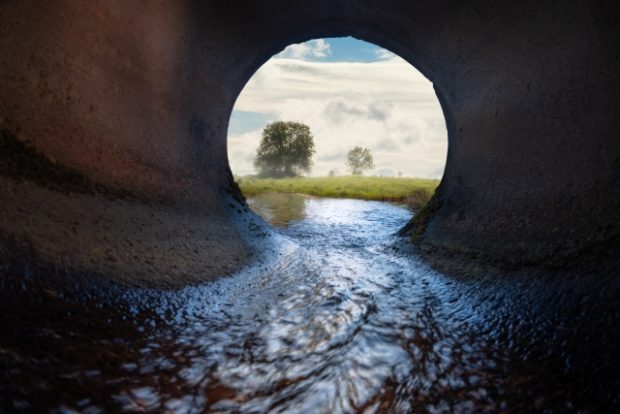How sewage sludge could be used to make the plastics of tomorrow

Waste sewage sludge could be used to make biodegradable plastics. Image: EyeEm/Mikhail Mikheev via AFP Relaxnews.
Researchers in the United States have discovered an efficient, cost-effective way to make biodegradable plastics from unused and potentially polluting waste. The process makes use of bacteria found in the salt water of mangroves.
The starting point for the study was a simple observation: the U.S. generates seven million tons of sewage sludge annually, enough to fill 2,500 Olympic-sized swimming pools. While some of this waste is repurposed for manure and other land applications, a large quantity is sent to landfill. Now, after several attempts, a team of researchers from Texas A&M University has discovered an efficient and cost-effective way of using leftover sludge to produce biodegradable plastics.
Published in the journal American Chemical Society (ACS) Omega last Sept. 17, the research centers around a strain of bacteria found in mangroves, called Zobellella denitrificans ZD1. The scientists discovered that this bacterium was capable of consuming sludge and wastewater to produce polyhydroxybutyrate, a type of biopolymer that can be used to substitute petroleum-based plastics.
“The price of raw materials to cultivate biopolymer-producing bacteria accounts for 25-45% of the total production cost of manufacturing bioplastics. Certainly, this cost can be greatly reduced if we can tap into an alternate resource that is cheaper and readily obtainable. We have demonstrated a potential way to use municipal wastewater-activated sludge and agri- and aqua-culture industrial wastewater to make biodegradable plastics,” said Dr. Kung-Hui Chu, one of the study’s co-authors.
While the findings may contribute to reducing the environmental impact of waste, they could also help make the cost of bioplastics more competitive than ordinary plastics.
For the study, the researchers focused on the Zobellella denitrificans ZD1 bacterium, usually found in the salt waters of mangroves. They tested the growth and the ability of the bacteria to produce polyhydroxybutyrate in three conditions: in pure glycerol; in glycerol containing salt and fatty acids; and in wastewater-activated sludge. They found that the bacteria were capable of producing polyhydroxybutyrate in all three cases, although at quantities lower in sludge than in crude glycerol.
According to the researchers, their discovery offers “a low cost, sustainable method to make bioplastics and another way to repurpose biowastes that are costly to dispose of.” CC
RELATED STORIES:
Epidemic of wipes and masks plague sewers, storm drains
Sewage testing could protect schools, hospitals from COVID-19 outbreaks